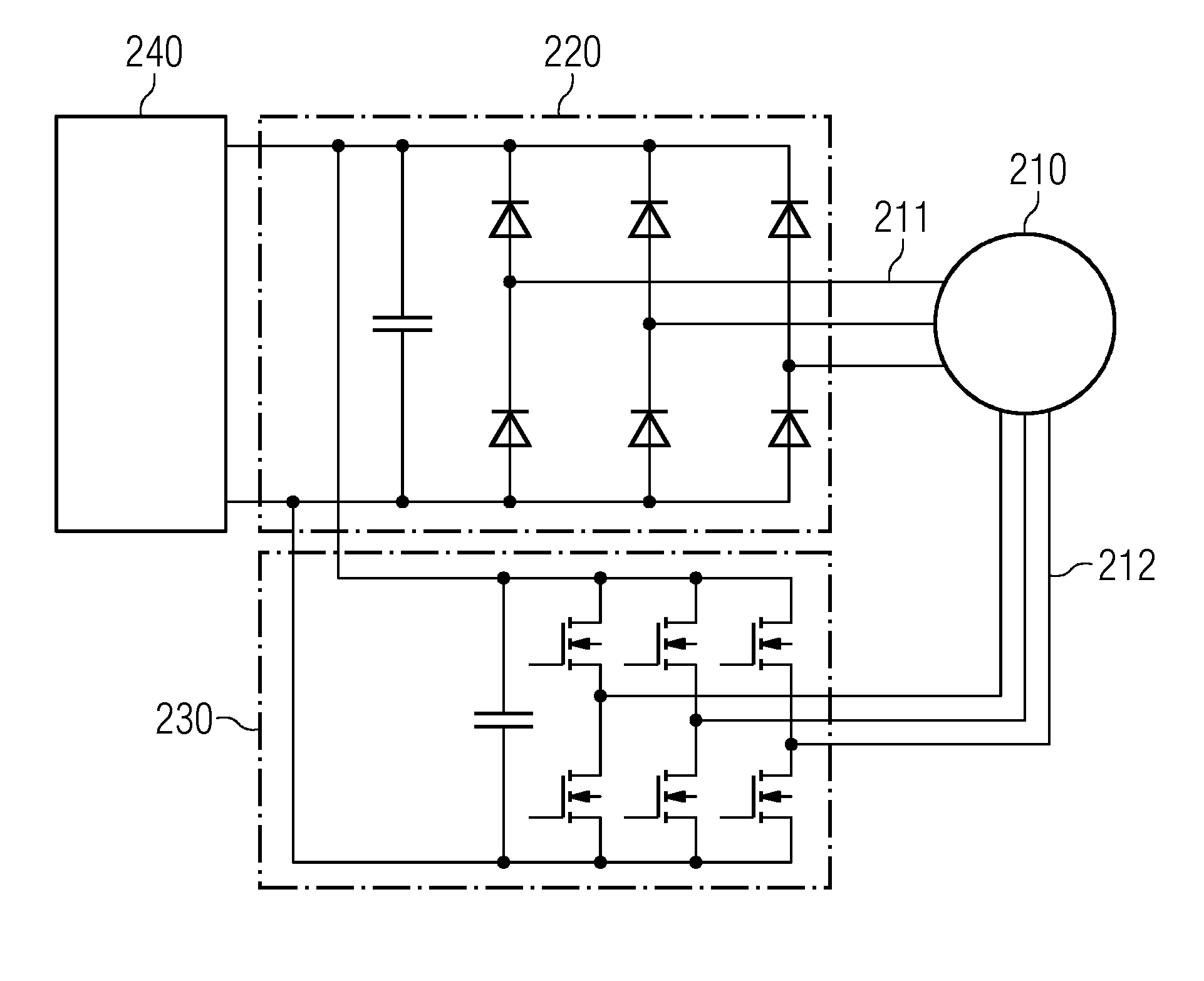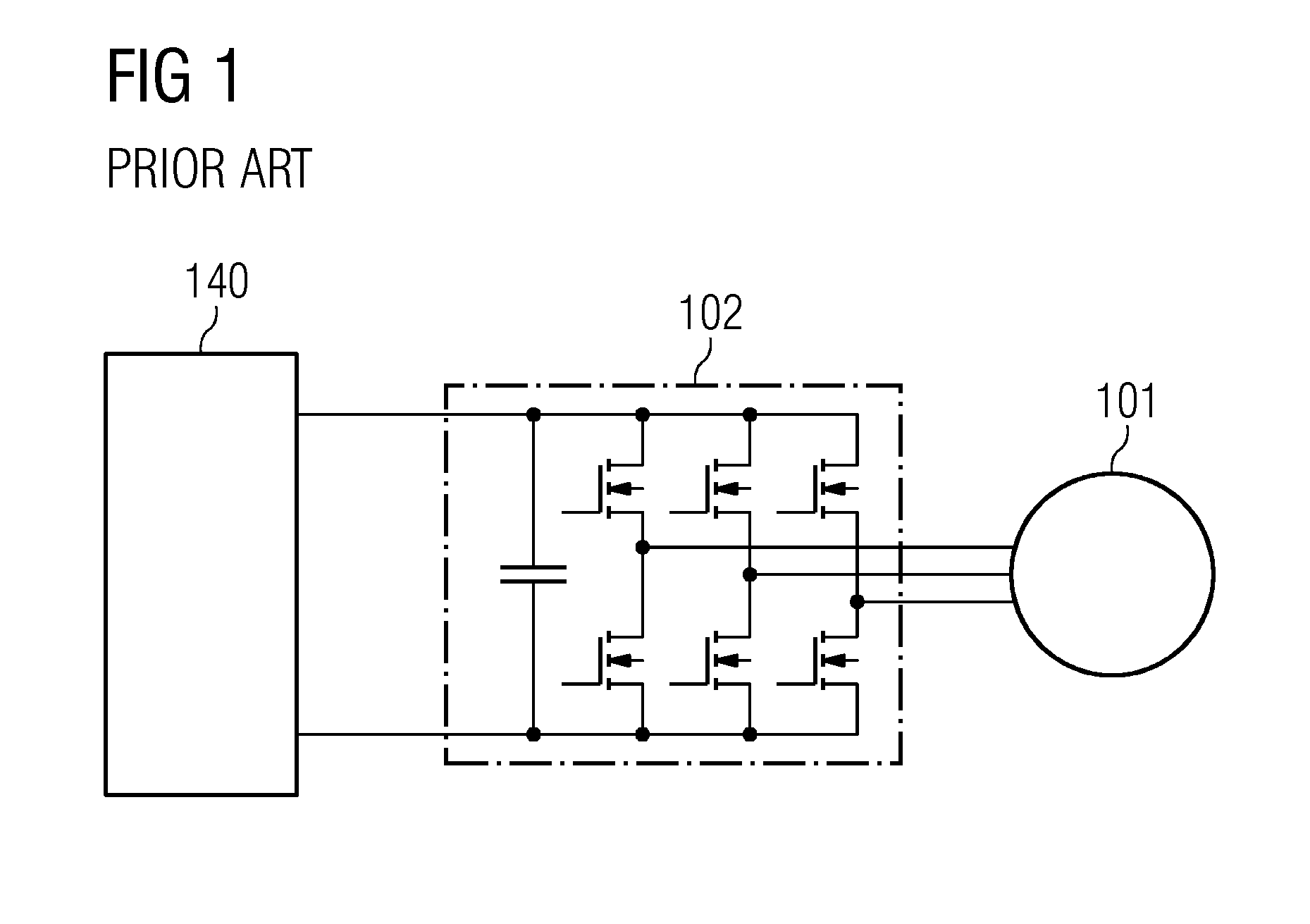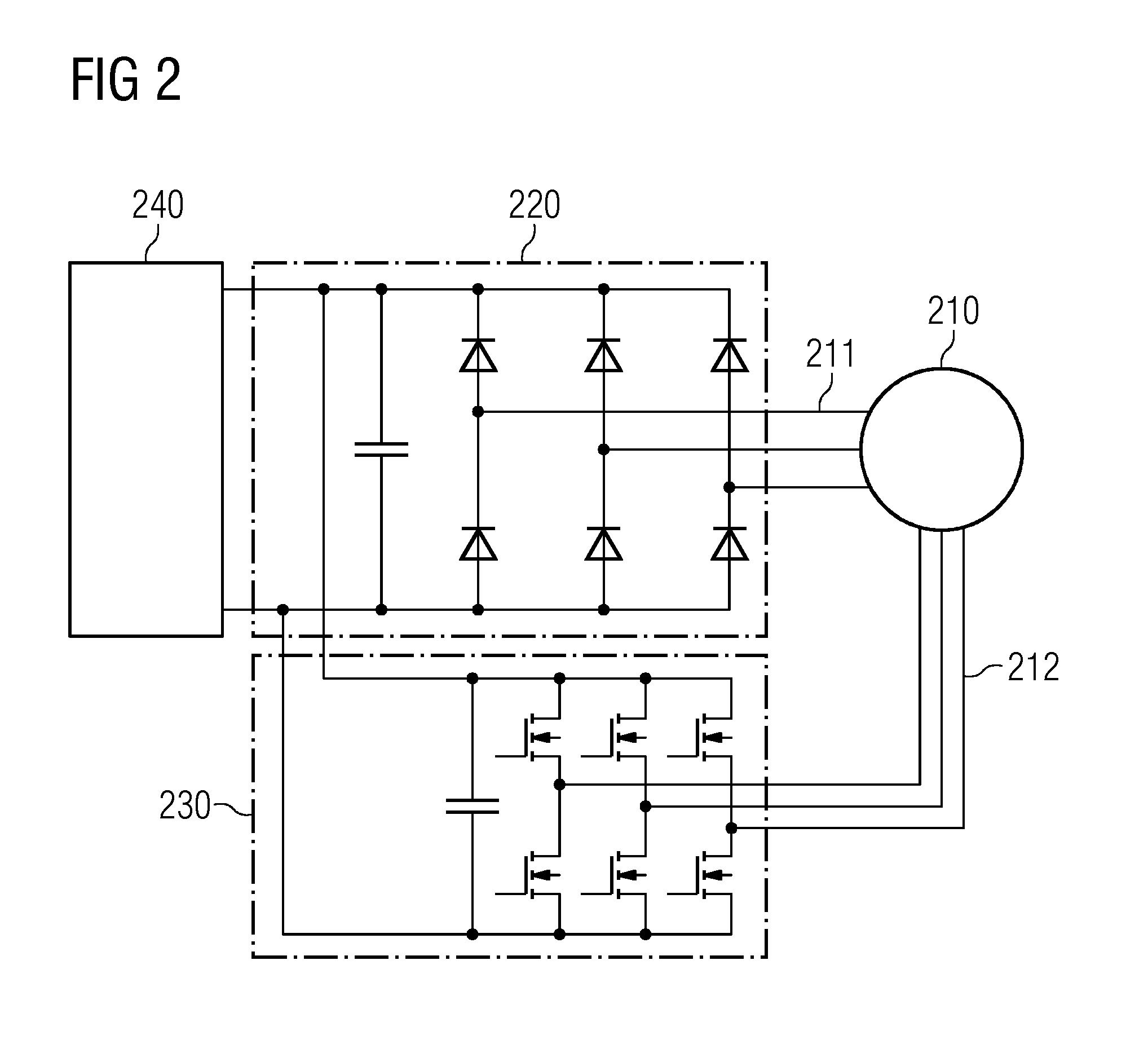Generator for producing electric power
- Summary
- Abstract
- Description
- Claims
- Application Information
AI Technical Summary
Benefits of technology
Problems solved by technology
Method used
Image
Examples
Embodiment Construction
[0056]The illustration in the drawing is schematic. It is noted that in different figures, similar or identical elements are provided with the same reference numerals or with reference numerals which differ only within the first digit.
[0057]FIG. 1 shows a generator according to the prior art. More specifically, FIG. 1 shows a generator comprising a generator unit 101, such as a wind turbine generator, and a voltage source converter system 102 for converting 3 phases of alternating voltage output by the generator unit 101 into an output DC voltage. The output DC voltage is fed to grid 140. As discussed in the introduction of the present application, the voltage source converter system 102 operates in PWM mode in order to both provide the output DC voltage and to perform various control functions on the generator unit, such as flux control (Id currents) and injection of harmonic currents for reducing torque ripple etc.
[0058]FIG. 2 shows a generator according to an embodiment of the pr...
PUM
 Login to View More
Login to View More Abstract
Description
Claims
Application Information
 Login to View More
Login to View More - R&D
- Intellectual Property
- Life Sciences
- Materials
- Tech Scout
- Unparalleled Data Quality
- Higher Quality Content
- 60% Fewer Hallucinations
Browse by: Latest US Patents, China's latest patents, Technical Efficacy Thesaurus, Application Domain, Technology Topic, Popular Technical Reports.
© 2025 PatSnap. All rights reserved.Legal|Privacy policy|Modern Slavery Act Transparency Statement|Sitemap|About US| Contact US: help@patsnap.com



